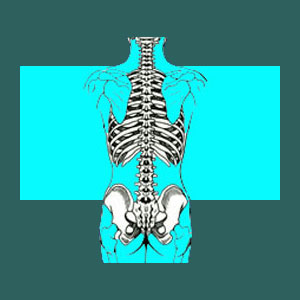
The Faber Test, also known as Patrick’s Test or figure four test, is a pain provocation evaluation technique often used when diagnosing sacroiliac symptomology. Faber stands for flexion, abduction and external rotation, which are the primary anatomical movements associated with this test.
Faber evaluation is just one of several techniques that may be employed when seeking to establish a diagnosis of sacroiliac pain. None of the tests are conclusive, but when combined, can provide substantial evidence towards making or ruling out a sacroiliac issue. Other typical sacroiliac tests include the Gaenslen Test, iliac gapping test, iliac compression test and thigh thrust test.
This essay details the use of the figure four test in the diagnosis of sacroiliac joint pain. We will explore the test and provide a pros and cons analysis of its effectiveness.
What is the Faber Test?
Faber is simple manual manipulation of the leg and hip that can be easily performed by a trained chiropractor, physician, physical therapist or PTA. The test is often used during the diagnostic phase for pain that exists in the hip, sacroiliac and/or lumbar spinal regions.
The figure four test is usually utilized along with the other aforementioned manipulations of the sacroiliac joint when SIJ dysfunction is suspected. Other techniques might be added to rule out hip joint dysfunction of lumbar spinal pathology. The test should always be performed along with a comprehensive physical exam. Additionally, the patients will also benefit from receiving medical imaging studies of the hip, SIJ and lumbar spine for a compete picture of all possible pain triggers.
Faber SIJ Evaluation Procedure
During the Patrick’s Test, the patient is able to lie down supine (on their back) on a raised examination table. The examiner should tell the patient how the test will work in order to prevent them from tightening up in anticipation of sharp pain.
Once relaxed, the examiner will cross the affected leg over the unaffected knee while simultaneously stabilizing the patient at the unaffected hip. The leg will bend at the knee and form a figure four pattern which is where the test gets it name. Once positioned, the examiner will apply gentle pressure to the inside of the patient’s knee, bringing the knee towards the examination table. If pain, tightness or inability to move the leg is created with this motion, then the test will be ruled positive, indicating possible sacroiliac or hip joint issue,
Often, the test will be repeated on the unaffected side in unilateral pain expressions just as a reference and to gauge patient reaction to what should be a pain-free manipulation.
Faber Test Pros and Cons
The Faber examination is not conclusive for any type of pain and can not verifiably produce a diagnosis. However, when positive, it is strongly indicative for sacroiliac or hip joint dysfunction.
On the positive side, the Patrick’s Test is easy to perform, easy to limit pain experienced by the patient, and relatively accurate in specificity for hip and SIJ issues.
On the downside, the figure four test can also produce pain in patients with lumbar spinal issues and muscular issues. The test often is ruled a false positive after subsequent diagnostic evaluation fails to uncover any type of SIJ or hip pathology. In essence, like other forms of SIJ evaluation, the test is largely subjective and can not be overvalued when it comes to the results obtained.





